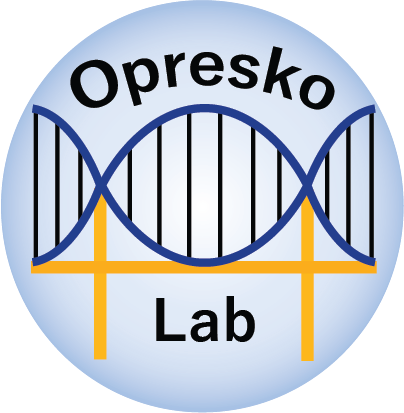Nucleic Acids Research Publication
We are so excited to announce the publication of Dr. Samuel Johnson and Dr. Samantha Sanford’s paper in Nucleic Acids Research. The paper, titled “BG4 antibody can recognize telomeric G-quadruplexes harboring destabilizing base modifications and lesions” was a collaborative effort between our lab and Dr. Sua Myong’s lab at Johns Hopkins University, led by her graduate student Tapas Paul. This study describes how the G-quadruplex antibody BG4 promotes folding of G-quadruplexes containing destabilizing G mutations or damage. Congratulations to Sam, Samuel, Tapas, and all the authors!
Please find the abstract and link to the article below.
Abstract:
BG4 is a single-chain variable fragment antibody shown to bind various G-quadruplex (GQ) topologies with high affinity and specificity, and to detect GQ in cells, including GQ structures formed within telomeric TTAGGG repeats. Here, we used ELISA and single-molecule pull-down (SiMPull) detection to test how various lengths and GQ destabilizing base modifications in telomeric DNA constructs alter BG4 binding. We observed high-affinity BG4 binding to telomeric GQ independent of telomere length, although three telomeric repeat constructs that cannot form stable intramolecular GQ showed reduced affinity. A single guanine substitution with 8-aza-7-deaza-G, T, A, or C reduced affinity to varying degrees depending on the location and base type, whereas two G substitutions in the telomeric construct dramatically reduced or abolished binding. Substitution with damaged bases 8-oxoguanine and O6-methylguanine failed to prevent BG4 binding although affinity was reduced depending on lesion location. SiMPull combined with FRET revealed that BG4 binding promotes folding of telomeric GQ harboring a G to T substitution or 8-oxoguanine. Atomic force microscopy revealed that BG4 binds telomeric GQ with a 1:1 stoichiometry. Collectively, our data suggest that BG4 can recognize partially folded telomeric GQ structures and promote telomeric GQ stability.
